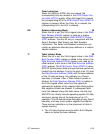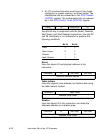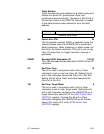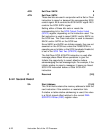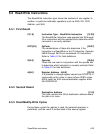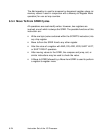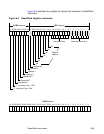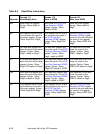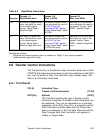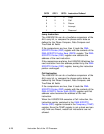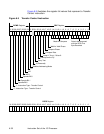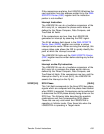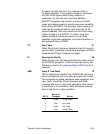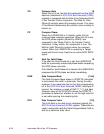
Transfer Control Instructions 6-27
Miscellaneous Notes:
˘ Substitute the desired register name or address for “RegA” in the syntax examples.
˘ data8 indicates eight bits of data.
6.6 Transfer Control Instructions
The Transfer Control, or Conditional Jump, instruction allows you to write
SCRIPTS that make decisions based on real time conditions on the SCSI
bus, such as phase or data. This instruction type includes Jump, Call,
Return, and Interrupt instructions.
6.6.1 First Dword
IT[2:0] Instruction Type -
Transfer Control Instruction [31:30]
OPC[2:0] OpCode [29:27]
This 3-bit field specifies the type of transfer control
instruction to execute. All transfer control instructions can
be conditional. They can be dependent on a true/false
comparison of the ALU Carry bit or a comparison of the
SCSI information transfer phase with the Phase field,
and/or a comparison of the First Byte Received with the
Data Compare field. Each instruction can operate in
Initiator or Target mode.
110 Add data to register without
carry and place the result
in the same register.
Syntax: “Move RegA +
data8 to RegA”
Add data to register without
carry and place the result in
the SCSI First Byte
Received (SFBR) register.
Syntax: “Move RegA + data8
to SFBR”
Add data to SFBR without
carry and place the result in
the register. Syntax: “Move
SFBR + data8 to RegA”
111 Add data to register with
carry and place the result
in the same register.
Syntax: “Move RegA +
data8 to RegA with carry”
Add data to register with
carry and place the result in
the SCSI First Byte
Received (SFBR) register.
Syntax: “Move RegA + data8
to SFBR with carry”
Add data to SFBR with carry
and place the result in the
register. Syntax: “Move
SFBR + data8 to RegA with
carry”
1. Data is shifted through the Carry bit and the Carry bit is shifted into the data byte.
Table 6.2 Read/Write Instructions
Operator
Opcode 111
Read-Modify-Write
Opcode 110
Move to SFBR
Opcode 101
Move from SFBR



